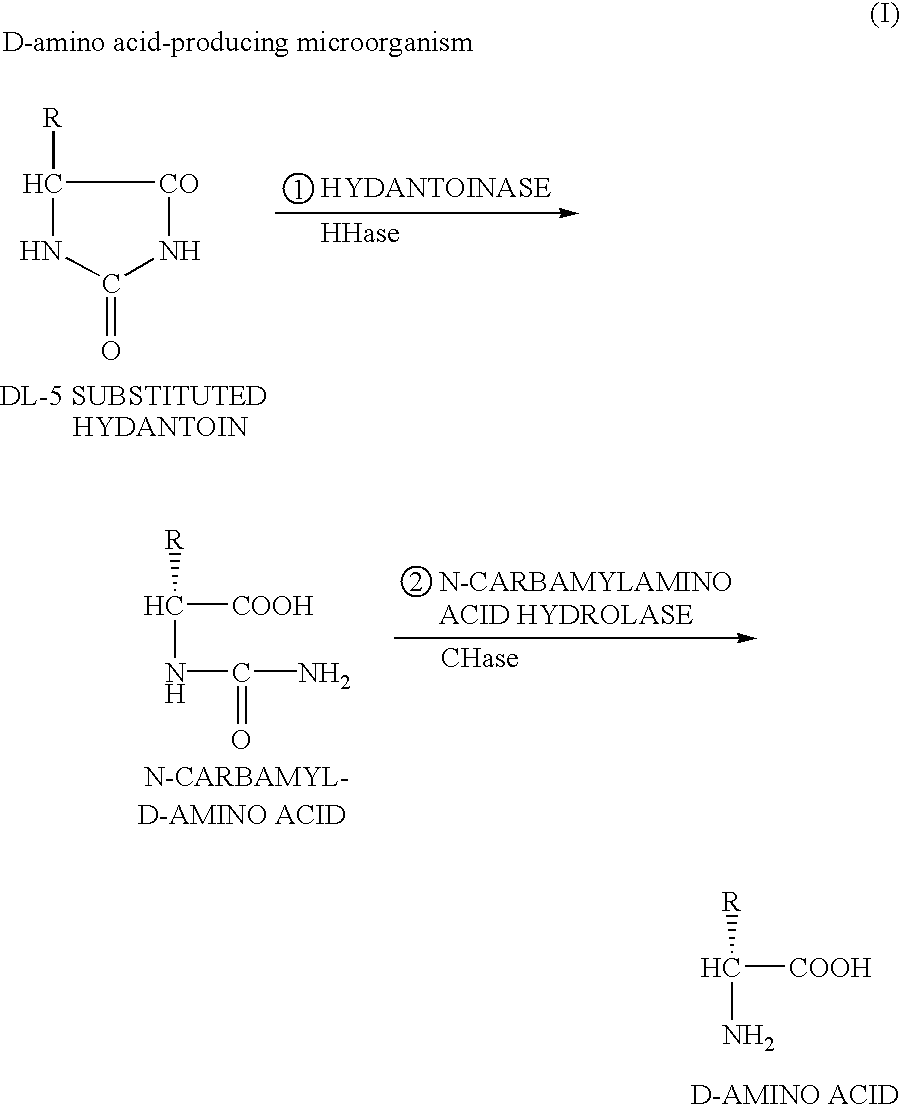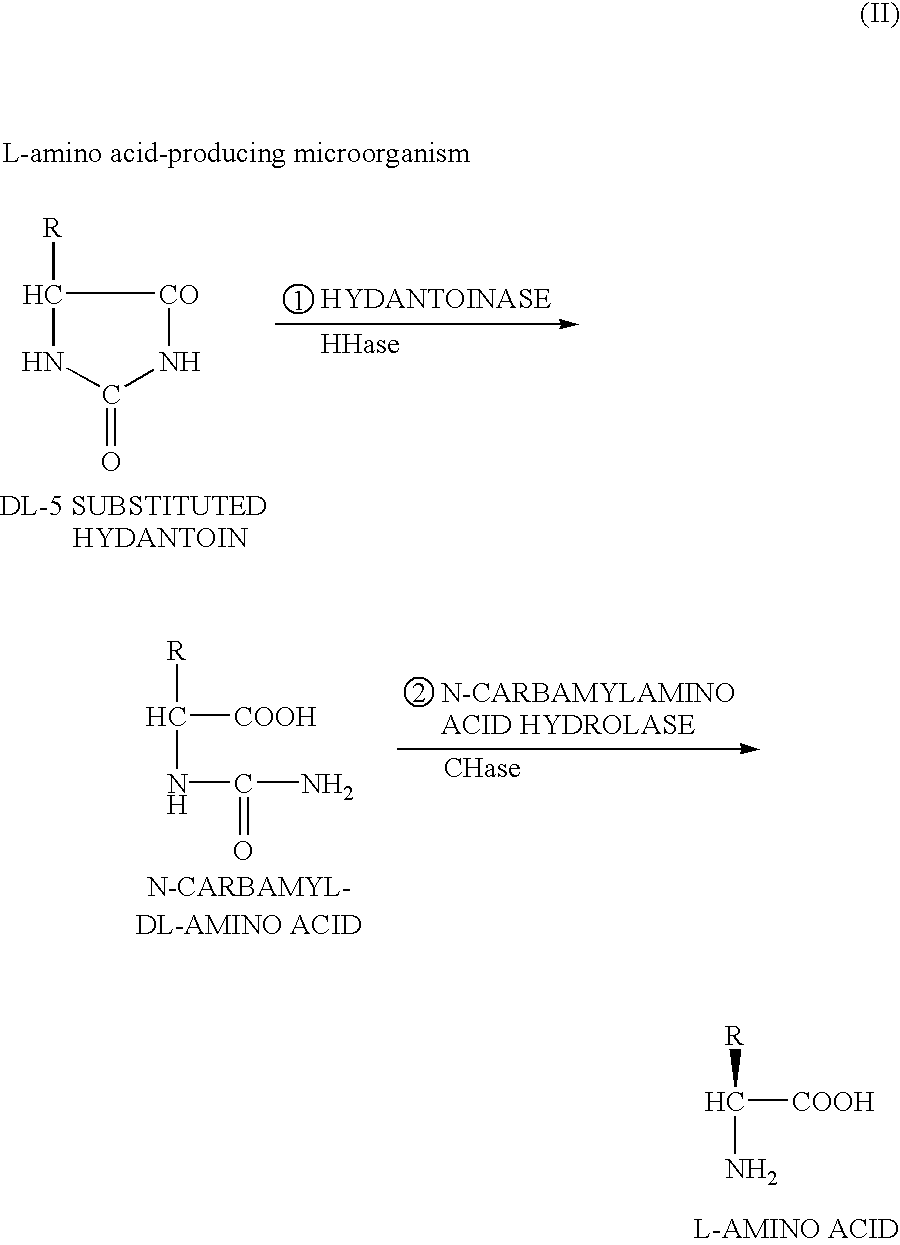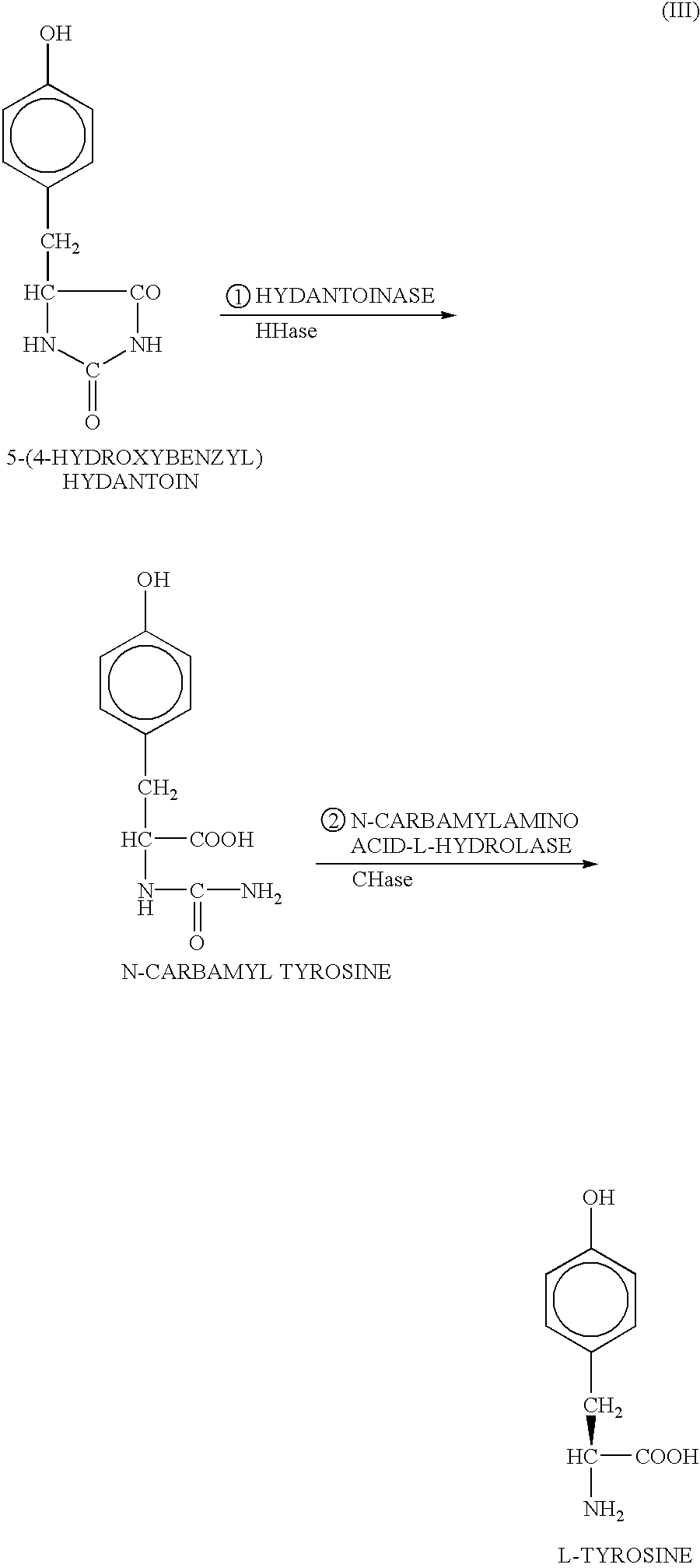DNA encoding hydantoinase, DNA encoding N-carbamyl-L-amino acid hydrolase, recombinant DNA, transformed cell, method of producing protein, and method of producing optically active amino acid
a technology of hydantoinase and ncarbamyllamino acid hydrolase, which is applied in the field of dna encoding hydantoinase and dna encoding ncarbamyllamino acid hydrolase, can solve the problem that hydantoinase widely available for synthesis of optically active amino acids represented by l-tyrosine cannot be produced efficiently by preparing
- Summary
- Abstract
- Description
- Claims
- Application Information
AI Technical Summary
Benefits of technology
Problems solved by technology
Method used
Image
Examples
example 1
Isolation of a Hydantoinase Gene and an N-carbamyl-L-amino Acid Hydrolase Gene
[0170]As described above, the present inventors estimated that in isolation and purification of a hydantoin racemase gene from cultured Microbacterium liquefaciens AJ3912, a simultaneously obtained nucleotide sequence downstream from the hydantoin racemase gene is a part of a hydantoinase gene because of homology thereof with a known hydantoinase gene, and further estimated that an N-carbamyl-L-amino acid hydrolase gene can be present downstream therefrom, and thus the inventors utilized such DNA fragment as the probe by which the full-length hydantoinase gene and the full-length N-carbamyl-L-amino acid hydrolase gene were obtained from a gene library of the above strain. For configuration of the gene library, E. coli JM109 was used as the host, and pUC18 or pUC19 was used as the vector.
1. Acquisition of the Microorganism
[0171]Microbacterium liquefaciens AJ3912 was refreshed by culturing it at 30° C. for 2...
example 2
Expression of the Hydantoinase Gene and N-carbamyl-L-amino Acid Hydrolase Gene in E. coli
1. Construction of an Expression Plasmid
[0183]To express the two genes in E. coli, plasmids pUCHH and pUCCH having the two genes ligated to a downstream region from a lac promoter in pUC18 were constructed in the following manner. First, each gene was amplified (the hydantoinase gene was amplified to nucleotide 29 downstream of the termination codon) by PCR where the chromosomal DNA in Microbacterium liquefaciens AJ3912 was used as the template while the oligonucleotides shown in Table 4 were used as primers. The amplified fragments were treated with EcoRI and BamHI, ligated to an EcoRI- and BamHI-cleaved fragment of pUC18, and introduced into E. coli JM109. From ampicillin resistance strains, a strain having the desired plasmids were selected, and the plasmids were designated expression plasmids PUCHH and pUCCH respectively.
[0184]
TABLE 4Primers used in amplification of the hydantoinasegene and...
example 3
Production of L-phenylalanine by Using the Washed E. coli Microorganism
[0200]0.5 g / dl (26 mM) L-5-benzyl hydantoin, 0.1 M KPB (pH 7.5), 1 g / dl washed microorganism of JM109 / pUCHH, and 1 g / dl washed microorganism of JM109 / pUCCH were mixed and reacted at 30° C. The reaction solution was sample with time, and its centrifuged supernatant was analyzed by HPLC, whereby the formed L-phenylalanine was quantified.
[0201]The results are shown in Table 7. As shown in this table, L-phenylalanine could be formed efficiently from L-5-benzyl hydantoin by using the washed microorganisms of E. coli expressing the hydantoinase gene and N-carbamyl-L-amino acid hydrolase gene respectively.
[0202]
TABLE 7Production of L-phenylalanine by thewashed microorganisms of E. coliReaction timeL-BHN-Car-L-PheL-Phe(hr)(g / dl)(g / dl)(g / dl) 00.500.000.00 50.390.040.05120.220.050.19240.070.040.32360.000.000.41
PUM
| Property | Measurement | Unit |
|---|---|---|
| Temperature | aaaaa | aaaaa |
| Fraction | aaaaa | aaaaa |
| Time | aaaaa | aaaaa |
Abstract
Description
Claims
Application Information
 Login to View More
Login to View More - R&D
- Intellectual Property
- Life Sciences
- Materials
- Tech Scout
- Unparalleled Data Quality
- Higher Quality Content
- 60% Fewer Hallucinations
Browse by: Latest US Patents, China's latest patents, Technical Efficacy Thesaurus, Application Domain, Technology Topic, Popular Technical Reports.
© 2025 PatSnap. All rights reserved.Legal|Privacy policy|Modern Slavery Act Transparency Statement|Sitemap|About US| Contact US: help@patsnap.com



